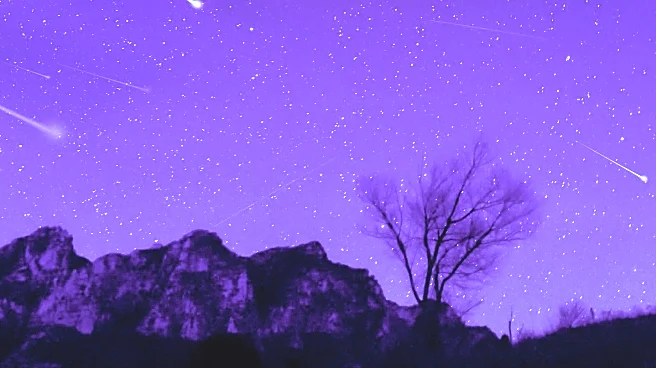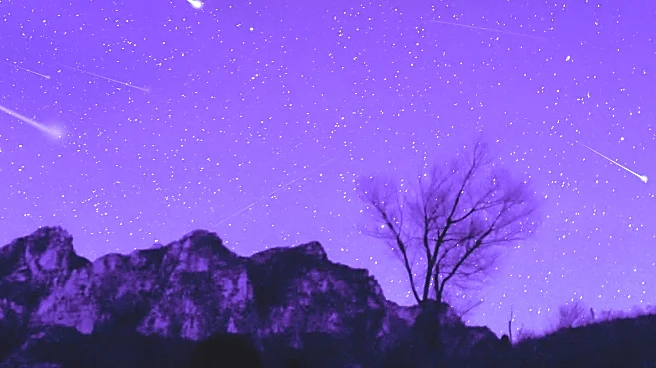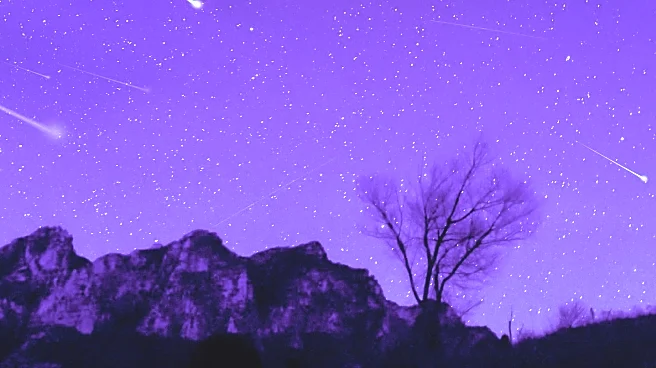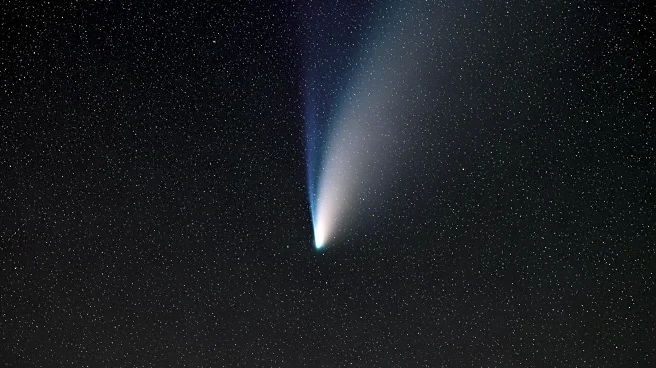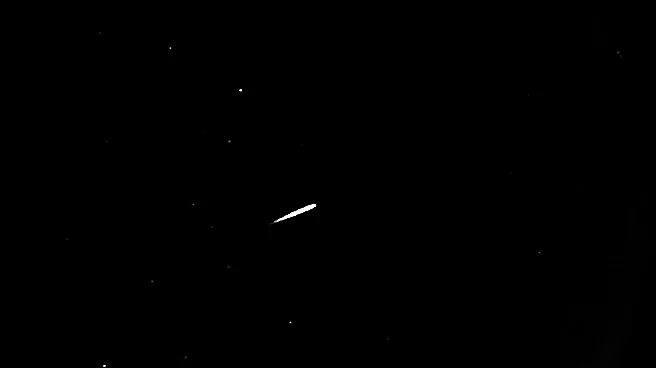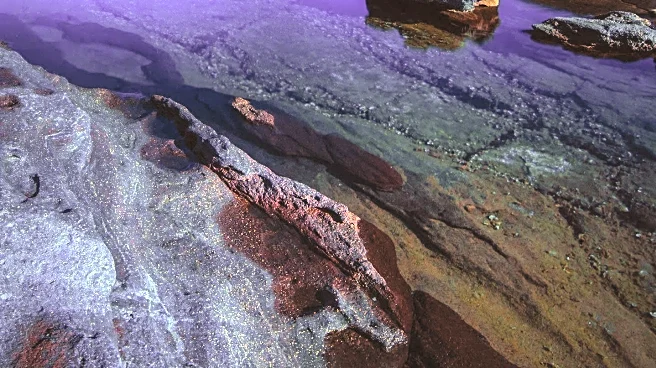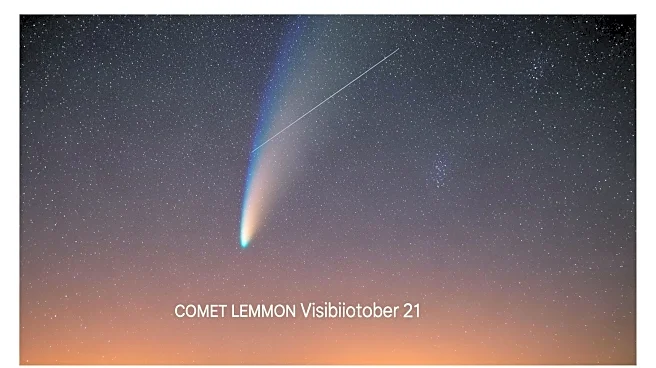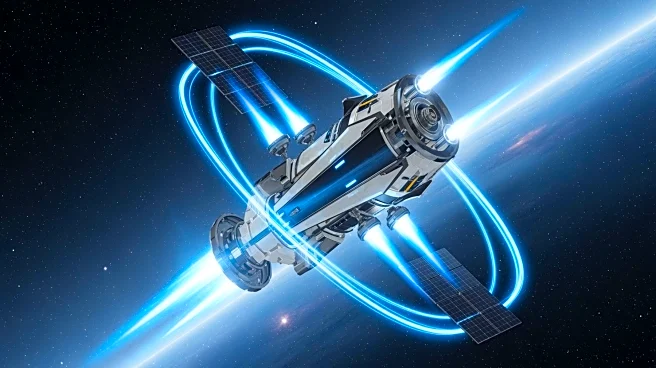What's Happening?
The Orionid meteor shower is set to peak overnight on October 20-21, 2025, providing a stunning celestial display for stargazers. This annual event occurs as Earth passes through the debris trail left
by Halley's Comet, resulting in 10-20 meteors per hour visible in the night sky. The meteors will appear to originate from a point near the red star Betelgeuse in the constellation Orion. The peak coincides with a new moon, ensuring a dark sky free from natural light pollution, which enhances visibility. The best viewing time is in the pre-dawn hours when Orion is high above the southern horizon in the U.S. Observers are advised to allow their eyes to adjust to the dark and use red light to maintain night vision.
Why It's Important?
The Orionid meteor shower is a significant event for both amateur and professional astronomers, offering a chance to observe a natural phenomenon linked to one of the most famous comets, Halley's Comet. This event not only provides an opportunity for public engagement with astronomy but also serves as a reminder of the dynamic nature of our solar system. The shower's visibility across the U.S. makes it accessible to a wide audience, potentially inspiring interest in space and science. Additionally, the lack of moonlight during the peak enhances the experience, making it a prime opportunity for astrophotography and public outreach.
What's Next?
Following the peak, the Orionid meteor shower will continue to be visible until November 7, with meteor activity gradually decreasing. Observers can still expect to see meteors in the days following the peak, particularly in rural areas with dark skies. The radiant point will shift into the constellation Gemini, altering the apparent origin of the meteors. Additionally, the Northern and Southern Taurid meteor streams are active, potentially leading to fireball sightings in early November. These events provide ongoing opportunities for observation and engagement with the night sky.
